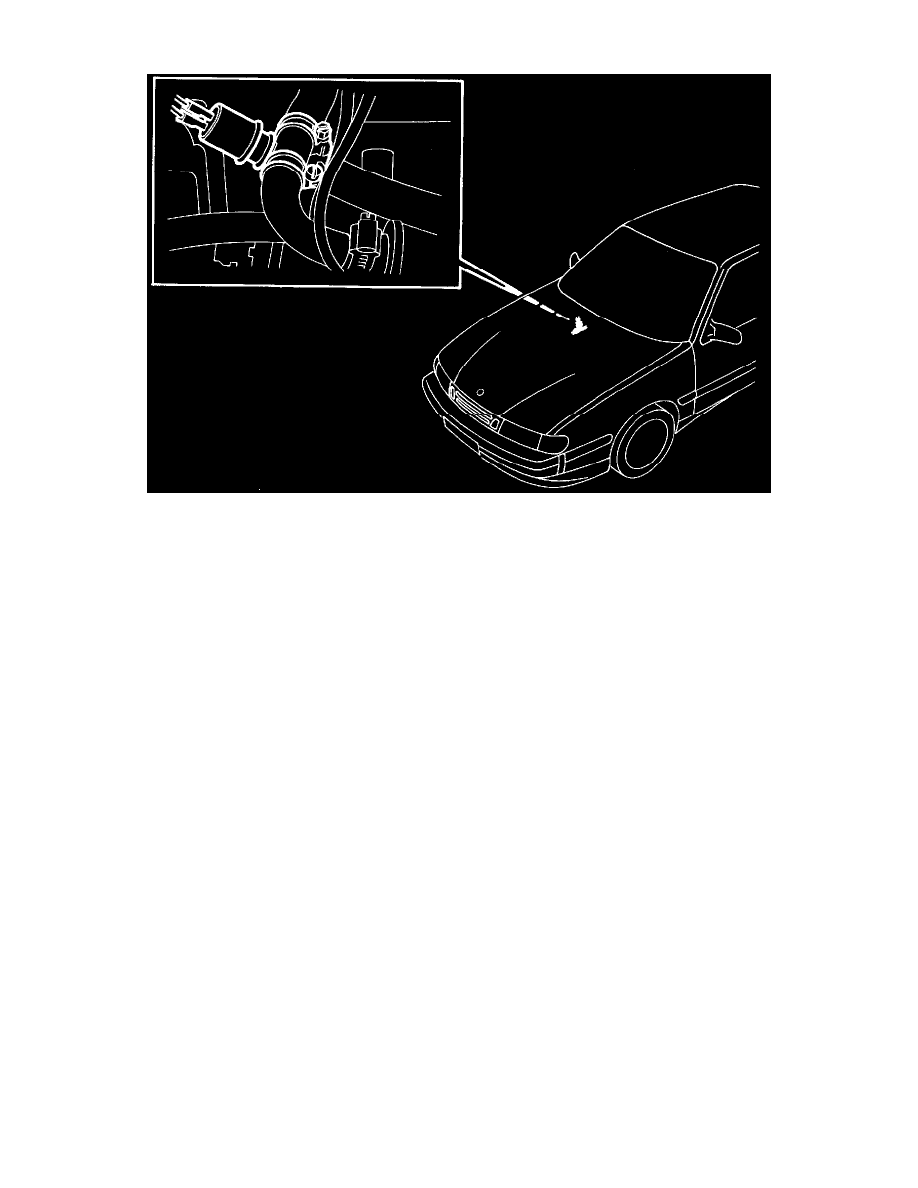9000 Hatchback L4-2290cc 2.3L DOHC Turbo EFI (1994)

Idle Up Control Valve: Description and Operation
Up to chassis number CG1001944 (M1986)
When the compressor is connected, load on the engine increases.
If the engine is running at idling speed, there is a danger that idling speed will become too low. In order to counteract this, there is a solenoid valve
which opens an air duct in the intake manifold when the compressor is engaged. The quantity of air to the engine is then increased (and therefore quantity
of fuel) and engine speed is maintained at a constant level.
From chassis number CG1001945 (M1986)
As all 16 valve engines after the above chassis number have automatic idle speed control, the solenoid valve for raising idling is discontinued.
The idle speed control system works as follows:
When the A/C compressor is switched on, a signal goes to the automatic idle speed control system, via the fuel injection control module, in order to
compensate for increased load. An increased quantity of air is allowed to pass the throttle via the idle air control valve which is controlled by the
Automatic Climate Control (ACC) control module. There is a delay for compressor switch-on, and this depends on which fuel system the car is equipped
with.
In one case, delay is in the A/C relay and is about 0.6 seconds.
In the second case, the LH engine control module introduces the delay.
Delayed A/C start up when starting
From chassis number CG 1001945, all cars with ACC have a 10 s delay (depending on year model) for A/C start up after starting. This is so that there is
less load on the engine when starting if the A/C is switched on.
